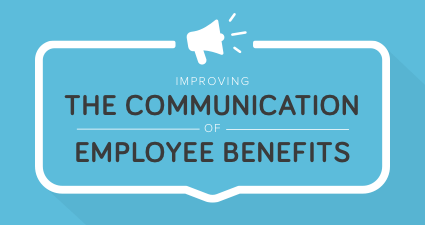Flexible Spending Account (FSA)
What Is an FSA?
A flexible spending account (FSA) is an employer-sponsored benefit employees use to pay for approved health and dependent care costs. Organizations can offer FSAs along with an insurance plan, enabling employees to set aside money for qualifying expenses outside the scope of their policy. FSAs also reduce your employees' taxable income and your organization's payroll taxes, providing mutual advantages.
Make benefits administration a breeze all year ‘round.
See how quick and easy managing benefits can be when you do it all in BambooHR.
Types of FSA Accounts
Each flexible spending arrangement has specific rules employers and employees must follow and a structure that appeals to different needs. Depending on your company's benefit program, you may offer one or more of the following FSA accounts:
- Healthcare FSA: This FSA is for any IRS-approved medical expense.
- Dependent Care FSA (DCFSA): This dependent care benefit is only for costs related to your employees' qualifying dependents (child or adult).
- Limited-Purpose FSA (LPFSA): An LPFSA is exclusively for dental and vision expenses not covered by an insurance plan.
How Does a Flexible Spending Account Work?
Employees sign up for an FSA during open enrollment. It's generally not required for an employee to enroll in a group health plan to open an account, but you can offer an FSA as an additional wellness perk. Here's an overview of how the process works:
- Contributions: Employees contribute through pre-tax payroll deductions. The employer may also match contributions, much like a 401(k).
- Access: The account receives a lump sum at the beginning of the plan year, so participants don't have to wait for the account to accrue before using it on larger expenses.
- Payment: Employees use an FSA card to pay directly or submit receipts for reimbursement after paying out of pocket.
- Ownership: An FSA is an employer-owned benefit. This means an employee can't take it with them if they leave the company.
FSA vs. HSA: What's the Difference?
A health savings account (HSA) is another tax-advantaged plan that lets employees save money for medical costs. However, HSAs are only for employees enrolled in a high-deductible health plan (HDHP). These funds are allowed to grow in the account year over year and can be invested in stocks, bonds, and other securities.
Can You Have an FSA and HSA?
The LPFSA and DCFSA are usually compatible with an HSA plan. For instance, an LPFSA can supplement out-of-pocket costs if the employee's HDHP only covers certain types of care (e.g. health and vision only or health and dental only).
Flexible Spending Account Rules to Know
The IRS sets the guidelines for each FSA program, but employers may also incorporate select provisions to craft a cafeteria plan that appeals to their workforce. Key FSA rules to know include:
Remaining FSA Funds
FSAs fall under the use-it-or-lose-it category, so unused funds expire at the end of each plan year. However, employers may include either a carryover provision or a grace period in their programs:
- FSA Carryover: A certain amount of the previous year's balance can roll into the next year's savings.
- FSA Grace Period: Employees receive an additional 2.5 months to use up their balance.
Any remaining funds in the account after the deadline go directly back to the company. An employer may use these funds for limited purposes, such as offsetting plan administrative costs.
FSA Limits
The IRS sets contribution and carryover limits and regularly adjusts for inflation. This is the most an employee and employer can contribute to the account collectively each year and the most an employee can roll over into the next plan year (should the plan allow). The 2023 health FSA and LPFSA limits are $3,050 for contributions and $610 for carryovers.
Dependent Care FSA Rules
A DCFSA, or dependent care assistance plan (DCAP), works a little differently than other FSAs. Generally, your employee pays for qualified expenses out of pocket and requests reimbursement later. As of 2022, the DCFSA contribution limit is $2,500 (married filing separately) or $5,000 (single or couples filing jointly). Employees are eligible to participate in this plan if they have a dependant who is:
- A child under age 13 at the time of service
- A spouse unable to care for themselves physically or mentally who lived with the employee for more than half the year
- Another qualified person unable to care for themselves physically or mentally who lived with the employee for more than half the year
IRS Publication 503, Child and Dependent Care Expenses, provides more information about DCFSA rules.
FSA-Eligible Expenses
Employees can use their health FSA and LPFSA on qualified medical expenses tax-free. These typically exclude insurance premiums, long-term care coverage, and amounts covered under another health plan, but many everyday health products and services are FSA-eligible, such as:
- Copays and hospital bills
- Prescription drugs
- Over-the-counter (OTC) medications
- Eyeglasses and contact lenses
- Orthodontia and other dental work
- Maternity care supplies
- First aid supplies
- Mobility equipment
- Addiction treatment
- Hearing aids
Dependent Care FSA-Eligible Expenses
A DCFSA applies to things that support a qualifying person's wellbeing and protection, allowing your employees and their spouses to work or seek employment. Examples of eligible dependent care FSA purchases include:
- Nursery school or preschool expenses
- Before- and after-care programs
- After-school programs
- Adult daycare expenses
- Babysitting services
Online FSA Stores
Many retailers have dedicated online sections for FSA-eligible items, including Target, Walmart, and CVS. This makes it easier for employees to find the everyday products they need and, most importantly, maximize their FSA before it expires.
Managing FSA and HSA Programs
FSAs and HSAs both involve employees setting aside funds from their paychecks for similar reasons, but these accounts run very differently. If your organization offers one or both of these tax-advantaged benefits, create a plan to educate your employees about their options and clarify which program(s) you offer during open enrollment.
Don’t lose track of another open enrollment to-do.
Make sure nothing falls through the cracks with BambooHR's free pre- and post-enrollment checklists.

Join us for a panel discussion with thought leaders from BambooHR and Zane Benefits as we explore how optimizing your benefits helps you recruit and retain the best people for your organization.

Although most of today’s HR professionals tend to be satisfied with the benefits packages their organizations offer, they raise several red flags in other key areas such as benefit communications